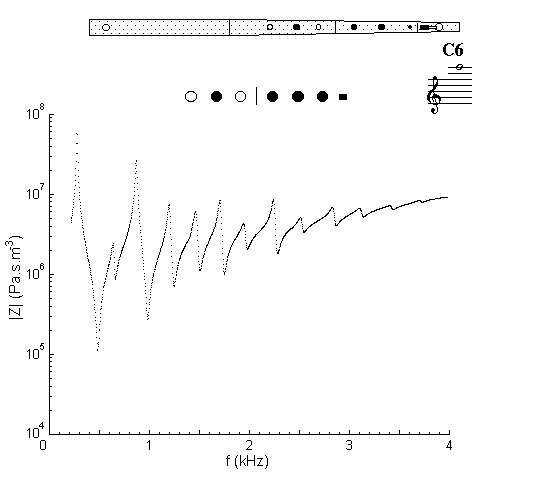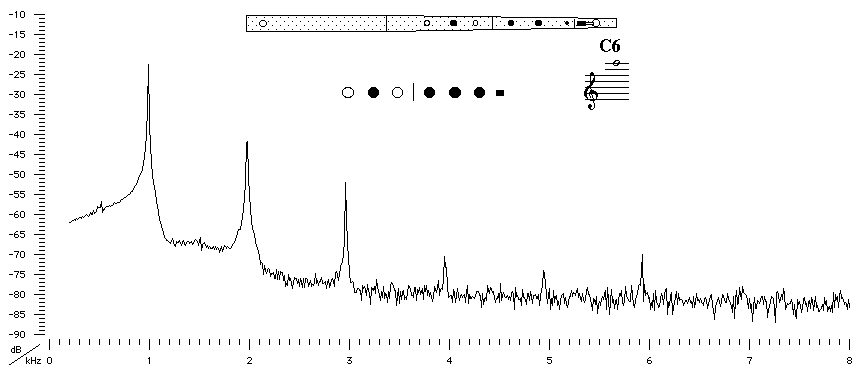| Acoustics of baroque, classical and modern flutes |
baroque flute |
C6 |

|
Acoustic and Fingering Schematic Non-specialist introduction
to acoustic impedance |
This can be considered as a complicated cross fingering. Closing LH2 alone flattens the first two minima of the C#5/6 fingering, but not enough to play C5 or C6. Closing the second hole (LH3) flattens the first minimum enough for C5, but too much for C6, because cross fingering is more effective at high frequencies. So, instead of closing LH3, the cross fingering itself is cross fingered. A fraction of the resonant wave is transmitted past LH1, and a fraction of that past LH3 into the second cross fingering. This increases the effective length beyond that of the simple cross fingering.

Sound spectrum
of a baroque flute played using fingering for C6.
![]()
![]()
![]()
![]() You can hear C6
played by Matthew Ridley.
You can hear C6
played by Matthew Ridley.
| Acoustic measurements are available for these flutes - modern B, modern C, classical C, classical D, classical flared, baroque Sound clips are available for modern B, classical flared and baroque |
To compare flutes, it is easiest to open a separate browser window for each instrument. |